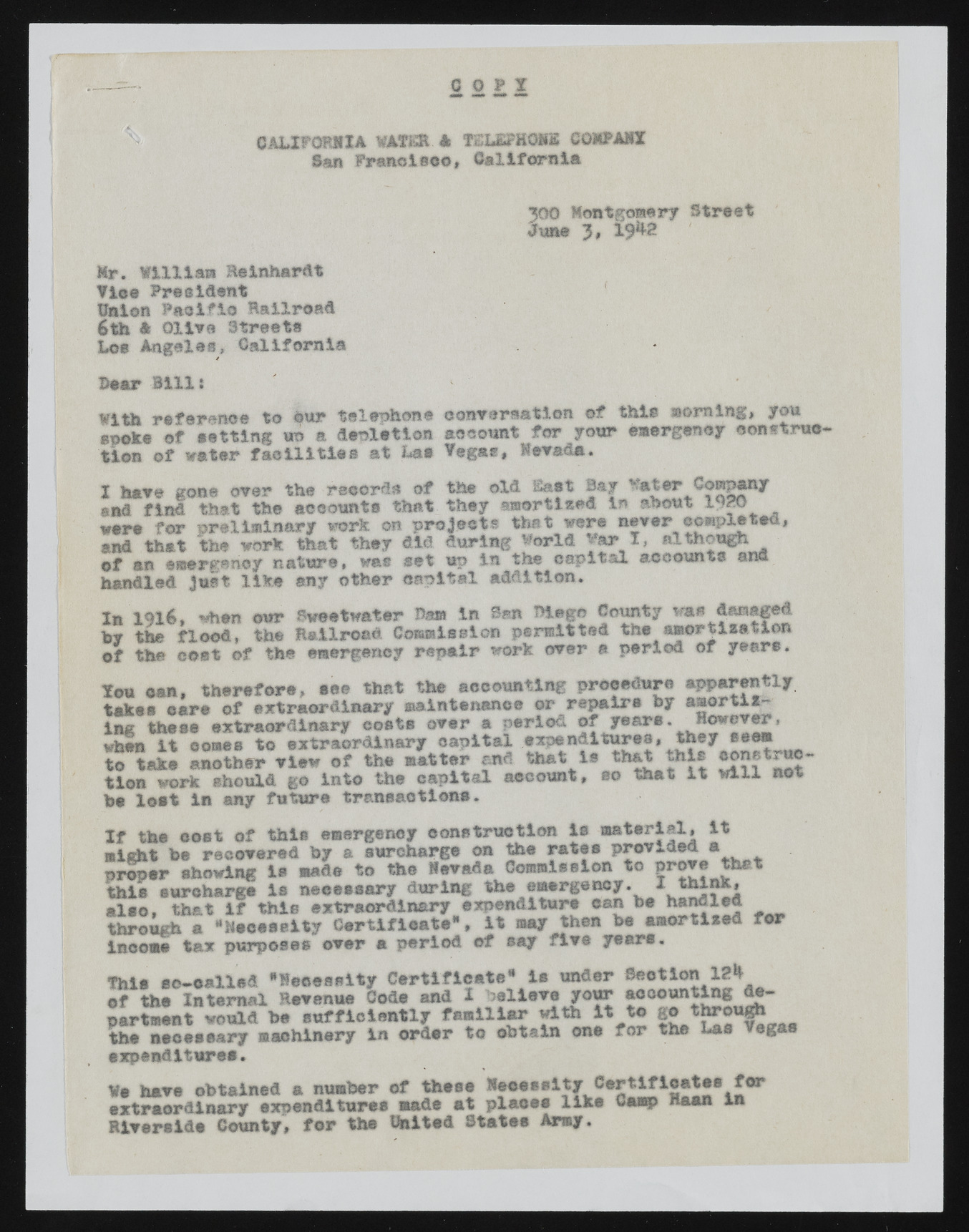Copyright & Fair-use Agreement
UNLV Special Collections provides copies of materials to facilitate private study, scholarship, or research. Material not in the public domain may be used according to fair use of copyrighted materials as defined by copyright law. Please cite us.
Please note that UNLV may not own the copyright to these materials and cannot provide permission to publish or distribute materials when UNLV is not the copyright holder. The user is solely responsible for determining the copyright status of materials and obtaining permission to use material from the copyright holder and for determining whether any permissions relating to any other rights are necessary for the intended use, and for obtaining all required permissions beyond that allowed by fair use.
Read more about our reproduction and use policy.
I agree.Information
Digital ID
Permalink
Details
More Info
Rights
Digital Provenance
Publisher
Transcription
0 0 ? I set CALIFORNIA | W 4b TELEPHONE COMPANX San Francisco, California 300 Montgomery Street June 3 , 19*2 Mr. William Belnhardt floe President Galon Paoifio Railroad 6 th 9t 01 It a Street* Los Angeles,t California * Bear Bill; with reference to our telephone conversation of this »oming> yon apohe of setting uo a depletion account for your emergency construction ©f water facilities at Lae Tegae, Nevada. I have gone over the records of the old East Bay Water Company end find that the accounts that they amortized is shout 1920 were for preliminary work on projects that were never comply tea, and that the work that they did during World War I, nlthough of an emergency nature, was set up in the capital accounts and handled Just like any other capital addition. In 1916, when our Sweetwater Ram in San IHego County was damaged by the flood, the Railroad CoffisslsBion permitted the amortization of the coat o f the emergency repair work over a period of yeare. *ou ean, therefore, see that the accounting procedure apparently takes ears of extraordinary maintenance or repair# by anortiling these extraordinary costs over a period of years. however, when it comes to extraordinary capital expenditures, they seem to take another view of the natter and that is that this tlon work should go Into the capital account, eo that it will not be lost in any future transactions. If the oost of this emergency construction Is natsrial. It nifiht bs recovered by a surcharge on the rates provided a proper showing Is made to the Nevada Commiesion to prove that this surcharge is necessary during the emergency. I think, also, that if this extraordinary expenditure ean be handled through a •‘Necessity Certificate", it may then be amortised for income tax purposes over a period of say five years. This so-called "Necessity Certificate" is under Section 12* of the Internal Revenue Code and 1 believe your accounting department would be sufficiently familiar with it to the necessary machinery in order to obtain one for the Las Vegas expenditures. Vs have obtained a number of these Neoessity Certmcates extraordinary expenditures made at places like Camp naan in Riverside County, for the tfelted States Army.

